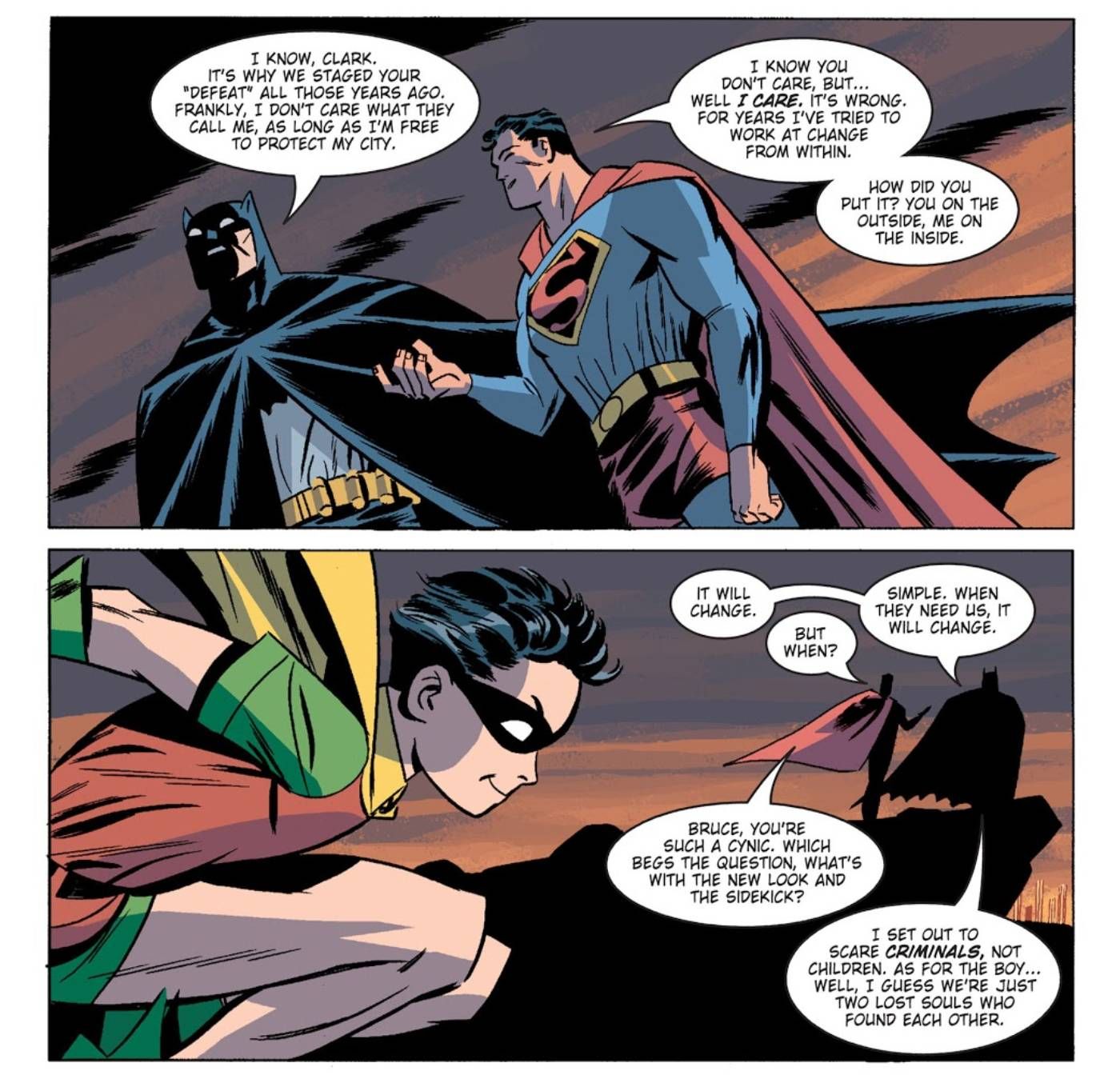In the late Darwyn Cooke’s DC: The New Frontier, Batman explained why he gave himself a makeover between the Golden and the Silver Age. When he was first introduced in comics, Batman was a grim and vengeful figure. However, the Dark Knight quickly rebranded himself into a family-friendly superhero by taking on a new costume and a sidekick.
Throughout the Caped Crusader’s first incarnation in Detective Comics, writer Bill Finger and artist Bob Kane were inspired by pulp heroes. At the time, Batman didn’t seem to have a straightforward code as he fought crime. He even wielded a pistol, indicating that he wasn’t opposed to taking lives if necessary. When Batman earned his first self-titled series, he evolved for the new era. No longer exclusive to the noir, mystery-based Detective Comics, Batman wore a lighter costume and adopted Dick Grayson AKA Robin. Although fans noticed the changes, they were never explained canonically. As comic book writer and artist Darwyn Cooke bridged the gap between the Golden and the Silver Ages of the DC Universe in DC: The New Frontier, he took the opportunity to elaborate on Batman’s changing public image.
When Superman pays a visit to Gotham City, he comments on his superhero colleague Batman’s rebrand. The Dark Knight that Superman had once known wouldn’t have worn a costume with lighter colors, or taken a child under his wing as a crimefighting partner. Previously, Batman wore a mask with longer bat ears in Detective Comics, intended to create a more intimidating look for criminals. His costume also appeared darker, compared to the one he later wears, which incorporates blue into the black cape and cowl. Superman calls him out and asks, “Bruce, you're such a cynic. Which begs the question, what's with the new look and the sidekick?” Batman explains his self-imposed makeover, saying, “I set out to scare criminals, not children. As for the boy... well, I guess we're just two lost souls who found each other.”
While Batman continued to evolve alongside Robin in the Silver Age, stories became progressively lighter and child-friendly. Compared to issues from Detective Comics which often involved murder mysteries, Batman plot lines grew more considerate of their young readership. When Batman introduced Robin the Boy Wonder, children had a hero who they could relate with, and imagine themselves inhabiting as the Caped Crusader’s sidekick.
Since Batman’s initial characterization in 1939 as a dark, brooding vigilante, writers have taken his evolution into account canonically. With the introduction of the bat family’s beginning in the form of Dick Grayson, Bruce Wayne had a reason to turn things down a notch. Batman began to understand that his war on crime shouldn’t pertain only to vengeance— he should also represent hope in the city he had sworn to protect. As a once orphaned child himself, Batman understood his calling went beyond fighting crime. He also had a responsibility to the young people in Gotham City who saw his example as a superhero.


